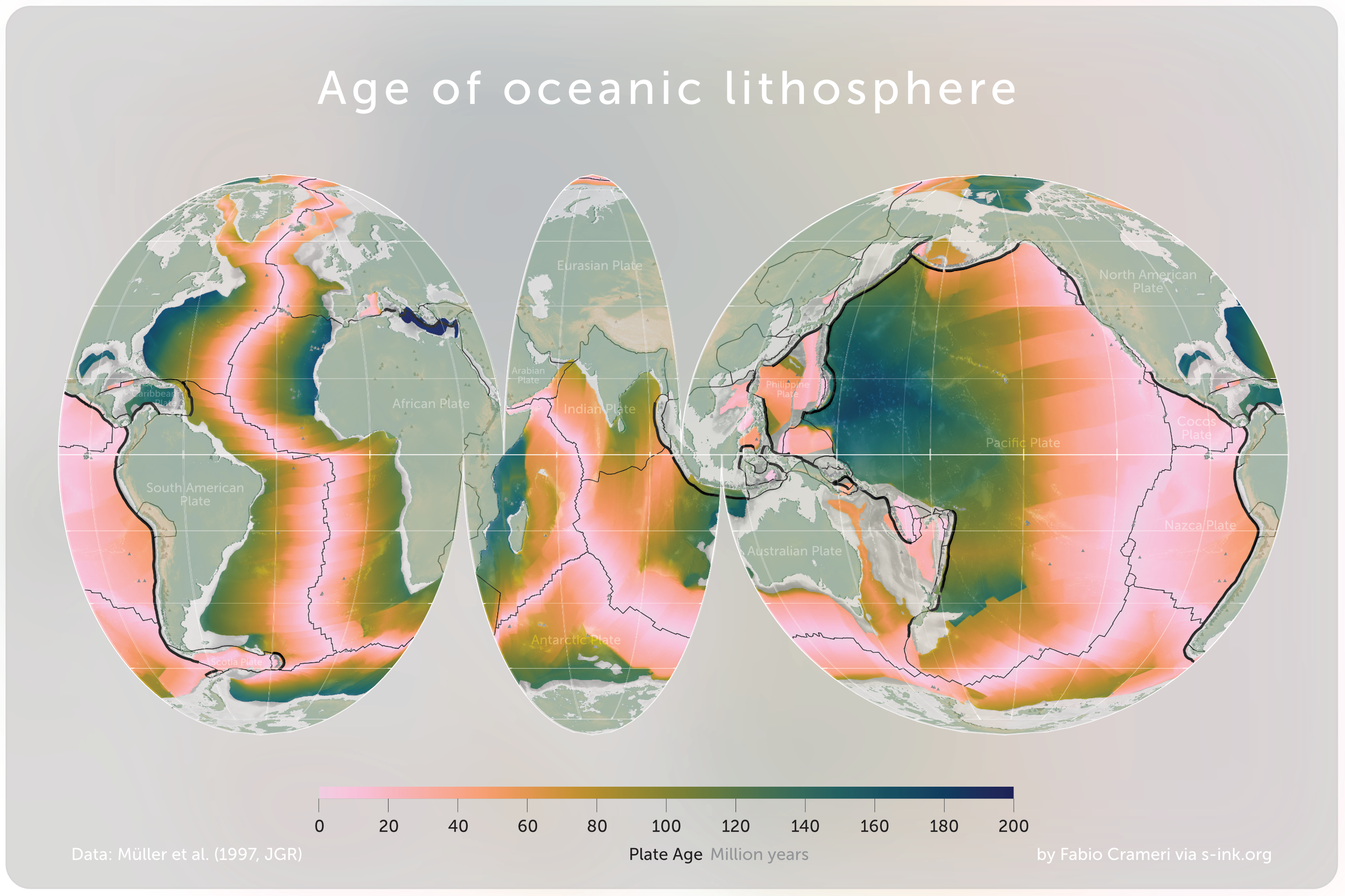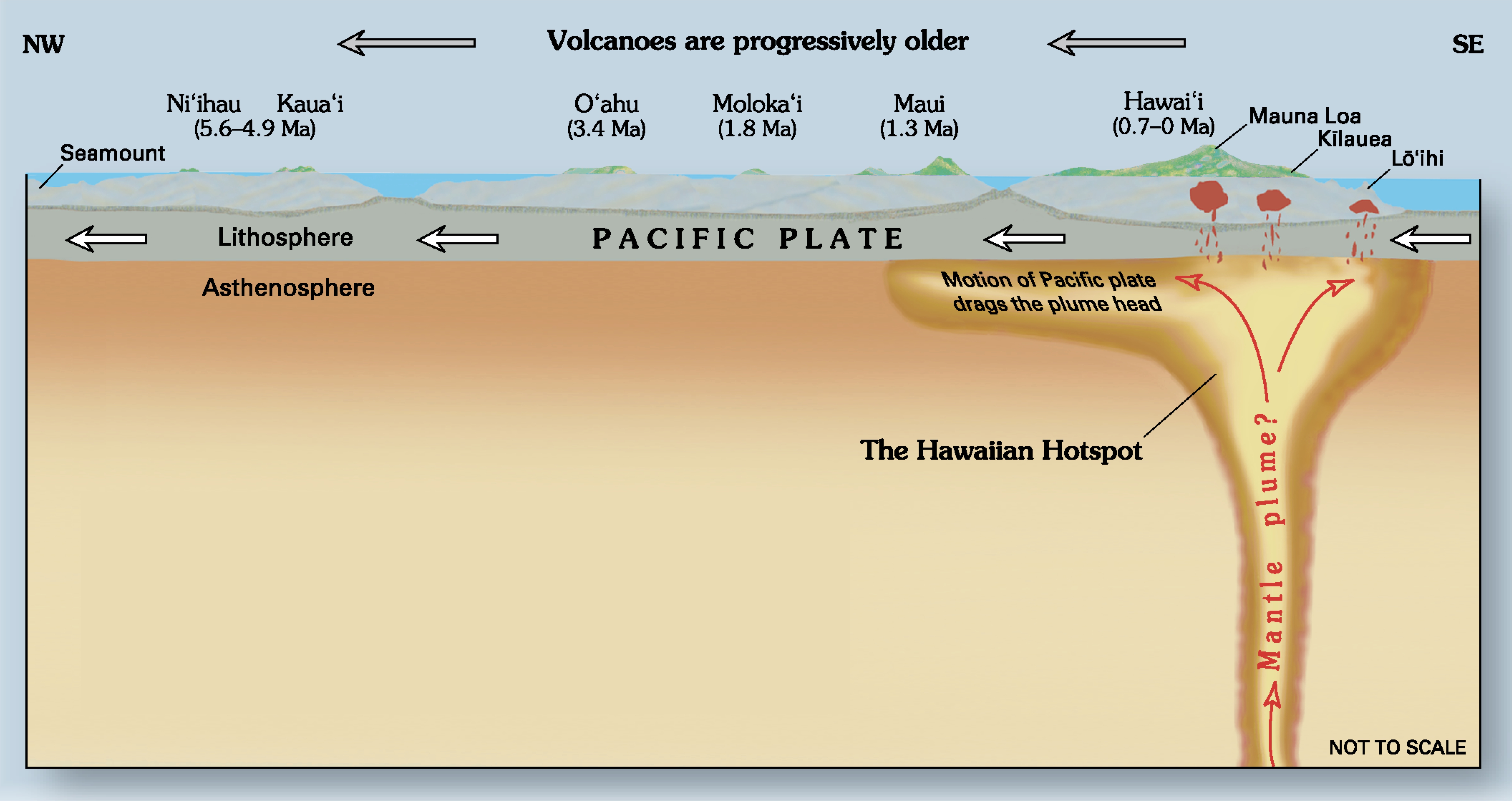|
Cocos Ridge
The Cocos Ridge is an aseismic ridge within the Cocos plate that runs northeastwards from just north of the Galápagos islands to the Middle America Trench offshore Panama. It records the effects of the Galápagos hotspot on the Cocos plate since the establishment of the Cocos–Nazca spreading centre during the break-up of the Farallon plate towards the end of the Oligocene Epoch (geology), epoch. It is the counterpart to the Carnegie Ridge, which developed on the Nazca plate. Cocos Island is the only emergent part of the ridge. The volcanic activity that formed the island is much younger than the part of the ridge where it is located. Extent The Cocos Ridge is a ~1000 km long bathymetric high, varying in width up to 200 km. It lies entirely within the Cocos plate. The presence of a shallow area between the Galápagos islands and Cocos Island was first identified by Alexander Agassiz in 1892, naming it the Galapagos Plateau. After the acquisition of more depth soundings it becam ... [...More Info...] [...Related Items...] OR: [Wikipedia] [Google] [Baidu] |
Carnegie Ridge
The Carnegie Ridge is an aseismic ridge on the Nazca plate that is being Subduction, subducted beneath the South American plate. The ridge is thought to be a result of the passage of the Nazca Plate over the Galápagos hotspot. It is named for the research vessel ''Carnegie (yacht), Carnegie'', which discovered it in 1929. Extent The Carnegie Ridge is seen to extend eastwards over 1,000 km from the Galapagos islands to the Colombia–Ecuador trench and is interpreted to continue beneath northern Ecuador for about a further 700 km. The subducted extent is disputed, with some workers arguing that there is no evidence of a subducted ridge beneath Ecuador extending more than about 60 km from the trench. Structure The Carnegie Ridge consists of thickened oceanic crust. Wide-angle seismic reflection and refraction data acquired over the central and eastern part of the ridge give crustal thicknesses of 13 km and 19 km respectively for crust that has estimated ag ... [...More Info...] [...Related Items...] OR: [Wikipedia] [Google] [Baidu] |
Cocos Island
Cocos Island () is a volcanic island in the Pacific Ocean administered by Costa Rica, approximately southwest of the Costa Rican mainland. It constitutes the 11th of the 15 districts of Puntarenas Canton of the Puntarenas Province, Province of Puntarenas. With an area of approximately , the island is roughly rectangular in shape. It is the Extreme points of North America, southernmost point of geopolitical North America if Island#Continental islands, non-continental islands are included, and the only landmass above water on the Cocos Plate, Cocos tectonic plate. The entirety of Cocos Island has been designated a Costa Rican National Parks of Costa Rica, National Park since 1978, and has no permanent inhabitants other than Costa Rican park rangers. As a result, it has been labelled as the world's largest uninhabited tropical island. Surrounded by deep waters with Equatorial Counter Current, counter-currents, Cocos Island is admired by Scuba set, scuba divers for its populations o ... [...More Info...] [...Related Items...] OR: [Wikipedia] [Google] [Baidu] |
Basalt
Basalt (; ) is an aphanite, aphanitic (fine-grained) extrusive igneous rock formed from the rapid cooling of low-viscosity lava rich in magnesium and iron (mafic lava) exposed at or very near the planetary surface, surface of a terrestrial planet, rocky planet or natural satellite, moon. More than 90% of all volcanic rock on Earth is basalt. Rapid-cooling, fine-grained basalt is chemically equivalent to slow-cooling, coarse-grained gabbro. The eruption of basalt lava is observed by geologists at about 20 volcanoes per year. Basalt is also an important rock type on other planetary bodies in the Solar System. For example, the bulk of the plains of volcanism on Venus, Venus, which cover ~80% of the surface, are basaltic; the lunar mare, lunar maria are plains of flood-basaltic lava flows; and basalt is a common rock on the surface of Mars. Molten basalt lava has a low viscosity due to its relatively low silica content (between 45% and 52%), resulting in rapidly moving lava flo ... [...More Info...] [...Related Items...] OR: [Wikipedia] [Google] [Baidu] |
Costa Rica
Costa Rica, officially the Republic of Costa Rica, is a country in Central America. It borders Nicaragua to the north, the Caribbean Sea to the northeast, Panama to the southeast, and the Pacific Ocean to the southwest, as well as Maritime boundary, maritime border with Ecuador to the south of Cocos Island. It has a population of around five million in a land area of nearly . An estimated people live in the capital and largest city, San José, Costa Rica, San José, with around two million people in the surrounding metropolitan area. The sovereign state is a Presidential system, presidential republic. It has a long-standing and stable Constitution of Costa Rica, constitutional democracy and a highly educated workforce. The country spends roughly 6.9% of its budget (2016) on education, compared to a global average of 4.4%. Its economy, once heavily dependent on agriculture, has diversified to include sectors such as finance, corporate services for foreign companies, pharmaceut ... [...More Info...] [...Related Items...] OR: [Wikipedia] [Google] [Baidu] |
Seismic Wide-angle Reflection And Refraction
Seismic wide-angle reflection and refraction is a technique used in geophysical investigations of Earth's crust and upper mantle. It allows the development of a detailed model of seismic velocities beneath Earth's surface well beyond the reach of exploration boreholes. The velocities can then be used, often in combination with the interpretation of standard seismic reflection data and gravity data, to interpret the geology of the subsurface. Theory In comparison to the typical seismic reflection survey, which is restricted to relatively small incidence angles due to the limited offsets between source and receiver, wide-angle reflection and refraction (WARR) data are acquired with long offsets, allowing the recording of both refracted and wide-angle reflection arrivals. Acquisition The acquisition setup depends on the type of seismic source being used and the target of the investigation. Source The source of the seismic waves may be either "passive", e.g. naturally occurring sou ... [...More Info...] [...Related Items...] OR: [Wikipedia] [Google] [Baidu] |
Reflection Seismology
Reflection seismology (or seismic reflection) is a method of exploration geophysics that uses the principles of seismology to estimate the properties of the Earth's subsurface from reflection (physics), reflected seismic waves. The method requires a controlled seismic source of energy, such as dynamite or Tovex blast, a specialized Seismic source#Air gun, air gun or a seismic vibrator. Reflection seismology is similar to sonar and acoustic location, echolocation. History Reflections and refractions of seismic waves at geologic Interface (matter), interfaces within the Earth were first observed on recordings of earthquake-generated seismic waves. The basic model of the Earth's deep interior is based on observations of earthquake-generated seismic waves transmitted through the Earth's interior (e.g., Mohorovičić, 1910). The use of human-generated seismic waves to map in detail the geology of the upper few kilometers of the Earth's crust followed shortly thereafter and has deve ... [...More Info...] [...Related Items...] OR: [Wikipedia] [Google] [Baidu] |
Oceanic Crust
Oceanic crust is the uppermost layer of the oceanic portion of the tectonic plates. It is composed of the upper oceanic crust, with pillow lavas and a dike complex, and the lower oceanic crust, composed of troctolite, gabbro and ultramafic cumulates. The crust lies above the rigid uppermost layer of the mantle. The crust and the rigid upper mantle layer together constitute oceanic lithosphere. Oceanic crust is primarily composed of mafic rocks, or sima, which is rich in iron and magnesium. It is thinner than continental crust, or sial, generally less than 10 kilometers thick; however, it is denser, having a mean density of about 3.0 grams per cubic centimeter as opposed to continental crust which has a density of about 2.7 grams per cubic centimeter. The crust uppermost is the result of the cooling of magma derived from mantle material below the plate. The magma is injected into the spreading center, which consists mainly of a partly solidified crystal mush derive ... [...More Info...] [...Related Items...] OR: [Wikipedia] [Google] [Baidu] |
Mid-ocean Ridge
A mid-ocean ridge (MOR) is a undersea mountain range, seafloor mountain system formed by plate tectonics. It typically has a depth of about and rises about above the deepest portion of an ocean basin. This feature is where seafloor spreading takes place along a Divergent boundary, divergent plate boundary. The rate of seafloor spreading determines the morphology of the crest of the mid-ocean ridge and its width in an ocean basin. The production of new seafloor and oceanic lithosphere results from Mantle (geology), mantle upwelling in response to plate separation. The melt rises as magma at the linear weakness between the separating plates, and emerges as lava, creating new oceanic crust and lithosphere upon cooling. The first discovered mid-ocean ridge was the Mid-Atlantic Ridge, which is a spreading center that bisects the North and South Atlantic basins; hence the origin of the name 'mid-ocean ridge'. Most oceanic spreading centers are not in the middle of their hosting oce ... [...More Info...] [...Related Items...] OR: [Wikipedia] [Google] [Baidu] |
Ocean Island Basalt
Ocean island basalt (OIB) is a volcanic rock, usually basaltic in composition, erupted in oceans away from tectonic plate boundaries. Although ocean island basaltic magma is mainly erupted as basalt lava, the basaltic magma is sometimes modified by igneous differentiation to produce a range of other volcanic rock types, for example, rhyolite in Iceland, and phonolite and trachyte at the intraplate volcano Fernando de Noronha. Unlike mid-ocean ridge basalts (MORBs), which erupt at spreading centers ( divergent plate boundaries), and volcanic arc lavas, which erupt at subduction zones ( convergent plate boundaries), ocean island basalts are the result of intraplate volcanism. However, some ocean island basalt locations coincide with plate boundaries like Iceland, which sits on top of a mid-ocean ridge, and Samoa, which is located near a subduction zone. In the ocean basins, ocean island basalts form seamounts, and in some cases, enough material is erupted that the rock protrudes fro ... [...More Info...] [...Related Items...] OR: [Wikipedia] [Google] [Baidu] |
Alexander Agassiz
Alexander Emmanuel Rodolphe Agassiz (December 17, 1835March 27, 1910), son of Louis Agassiz and stepson of Elizabeth Cabot Agassiz, was an American scientist and engineer. Biography Agassiz was born in Neuchâtel, Switzerland, and immigrated to the United States with his parents, Louis and Cecile (Braun) Agassiz, in 1846. He graduated from Harvard University in 1855, subsequently studying engineering and chemistry, and taking the degree of Bachelor of Science at the Lawrence Scientific School of the same institution in 1857; in 1859 became an assistant in the United States Coast Survey. Thenceforward he became a specialist in marine ichthyology. Agassiz was elected a Fellow of the American Academy of Arts and Sciences in 1862. Up until the summer of 1866, Agassiz worked as assistant curator in the museum of natural history that his father founded at Harvard. E. J. Hulbert, a friend of Agassiz's brother-in-law, Quincy Adams Shaw, had discovered a rich copper lode known as th ... [...More Info...] [...Related Items...] OR: [Wikipedia] [Google] [Baidu] |
Nazca Plate
The Nazca plate or Nasca plate, named after the Nazca region of southern Peru, is an oceanic list of tectonic plates, tectonic plate in the eastern Pacific Ocean basin off the west coast of South America. The ongoing subduction, along the Peru–Chile Trench, of the Nazca plate under the South American plate is largely responsible for the Andes, Andean orogeny. The Nazca plate is bounded on the west by the Pacific plate and to the south by the Antarctic plate through the East Pacific Rise and the Chile Rise, respectively. The movement of the Nazca plate over several Hotspot (geology), hotspots has created some volcanic islands as well as east–west running seamount chains that subduct under South America. Nazca is a relatively young plate in terms of the age of its rocks and its existence as an independent plate, having been formed from the breakup of the Farallon plate about 23 million years ago. The oldest rocks of the plate are about 50 million years old. Boundaries ... [...More Info...] [...Related Items...] OR: [Wikipedia] [Google] [Baidu] |







